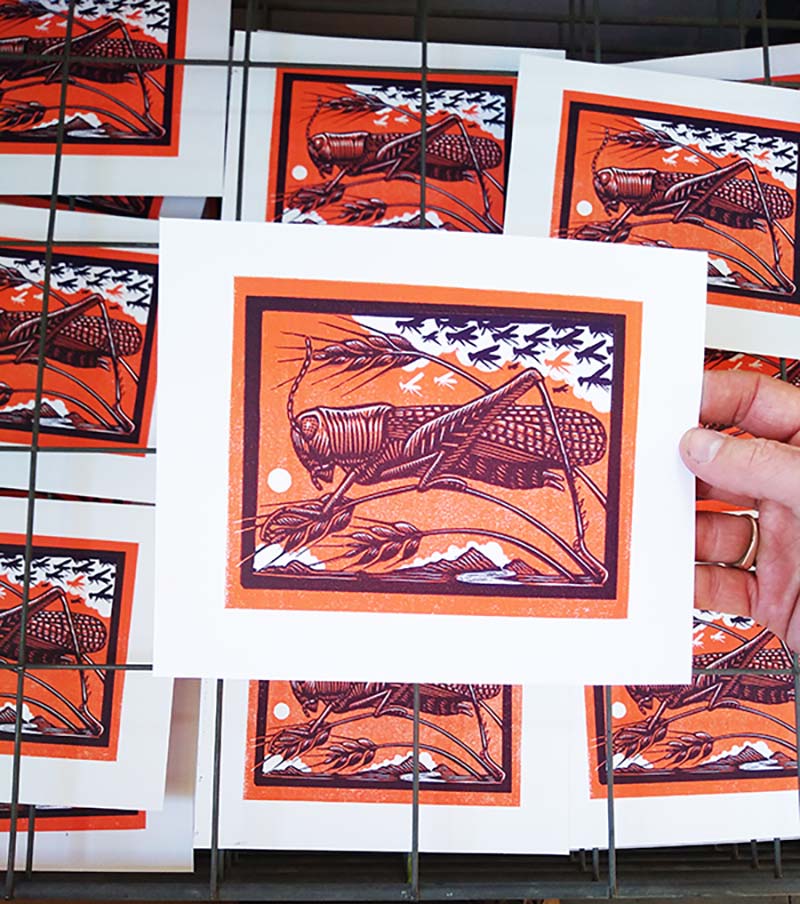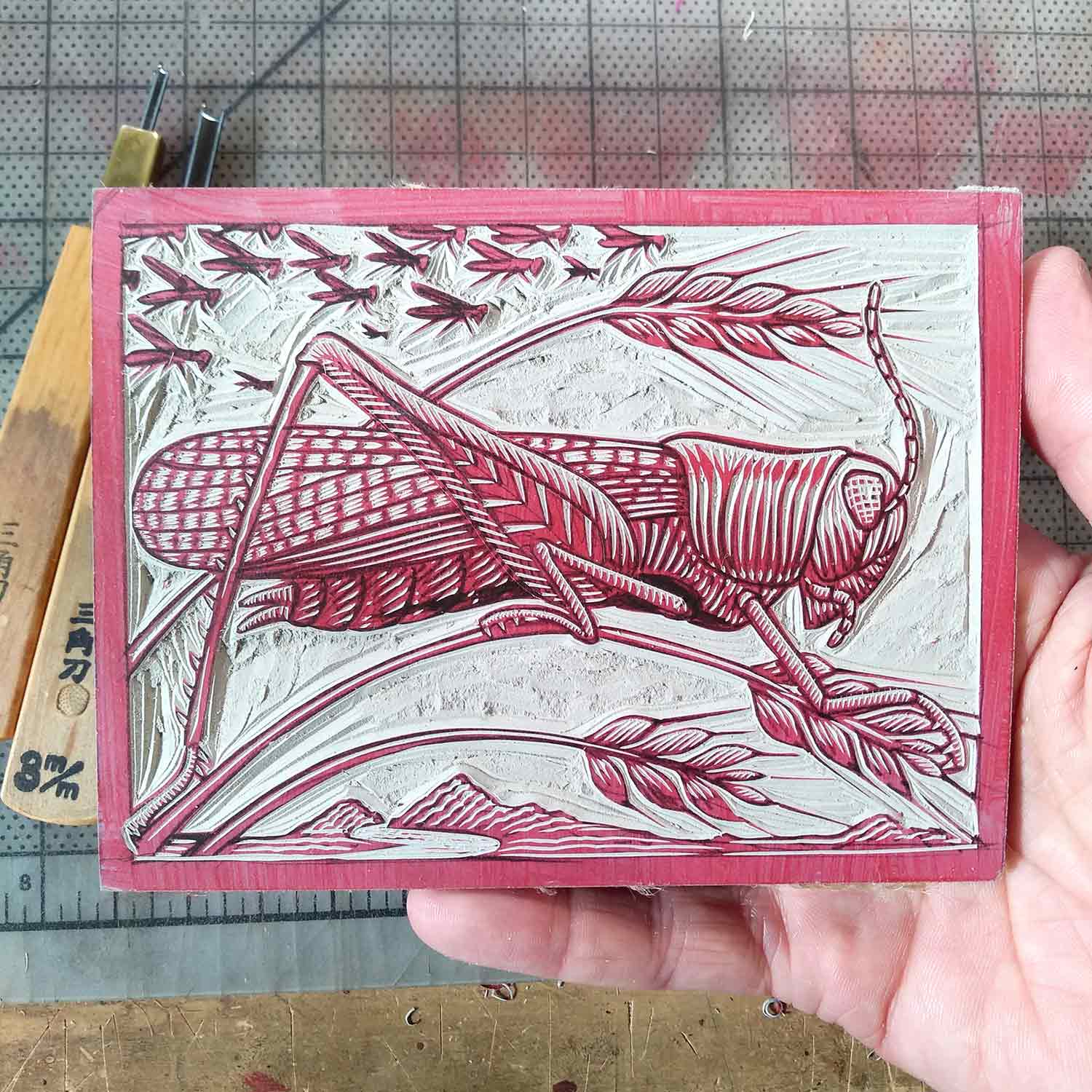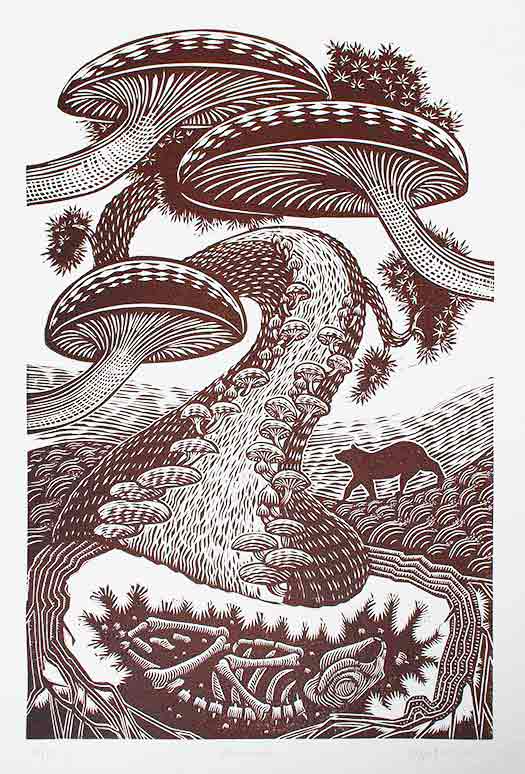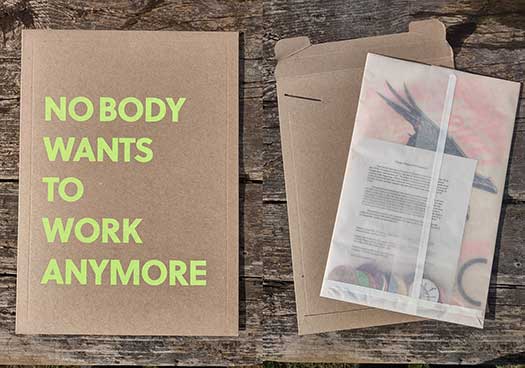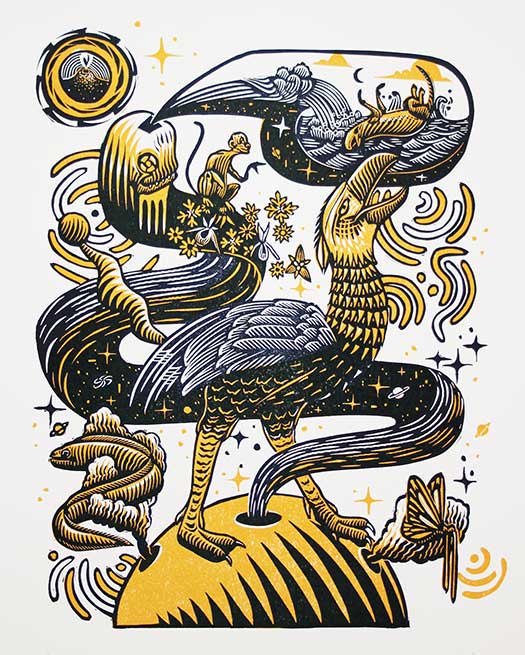This image represents an individual Rocky Mountain locust, Melanoplus spretus, a representative of what was once one of the most numerous species in the history of the entire planet, and which once darkened the skies of the mountain west like thunderstorms. The only place to see a Rocky Mountain locust today, however, is either in a museum or weathering out of the face of a melting glacier high in the Beartooth mountains of Montana: the species is extinct. Even though their numbers were once sufficient to cover the geographical area of entire states, they were wiped out when settlers began to plough the high mountain valleys where they bred. In a matter of three short decades, the last swarm had disappeared.
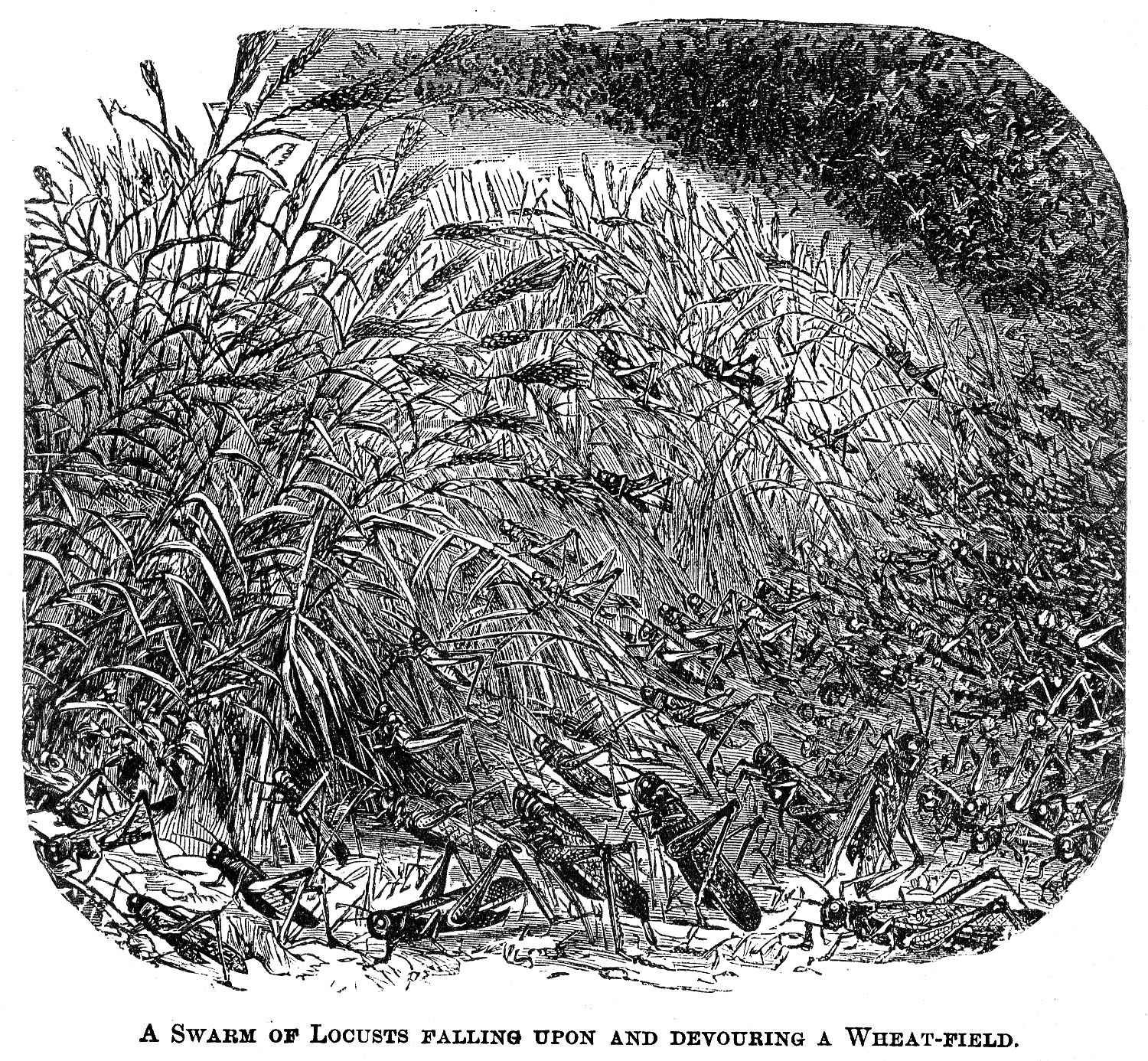
Locusts are a fascinating species to me- they are essentially grasshoppers that undergo a phase change when they experience certain conditions of climate and population, and when those conditions are optimal they stop mating, start eating everything in sight, and swarm in vast, destructive numbers. I think a lot about multitudes, about what happens in species with huge populations and which experience big peaks and valleys of population. The Rocky Mountain locust had the most extreme population flux possible- from perhaps the most numerous species on Earth to totally absent. I’ve been thinking about this in the context of COVID-19 as well: what is it like for a virus to go from an isolated reservoir of mammals in a remote forest to an explosive eruption in populations of humans all over the world?
As I write this, a desert locust swarm is threatening the livelihoods of millions of people in Somalia, Kenya, and Ethiopia, as climate change produces new conditions for tropical storms that facilitate the insects’ breeding cycle. This will be the second swarm cycle this year, following on the heels of swarms earlier in 2020 that devastated agriculture in both East Africa and Pakistan. I don’t really have anything more to offer about all this, I’ve just been thinking about these kinds of things a lot lately.
This post documents a bit of the process of making this new print, which will be up on the store as soon as it dries. I’ve been trying to get better at making multi-color, multiblock linocuts, and this is the latest example.
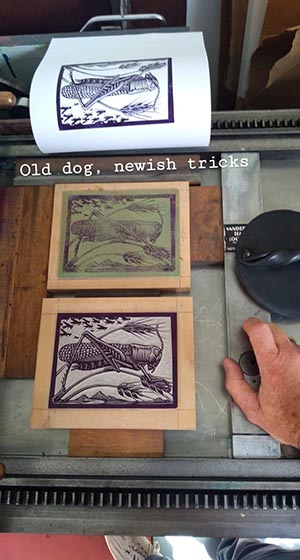
Transfering the image to a second block 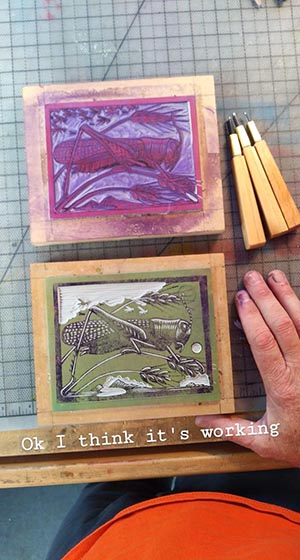
Both blocks carved
